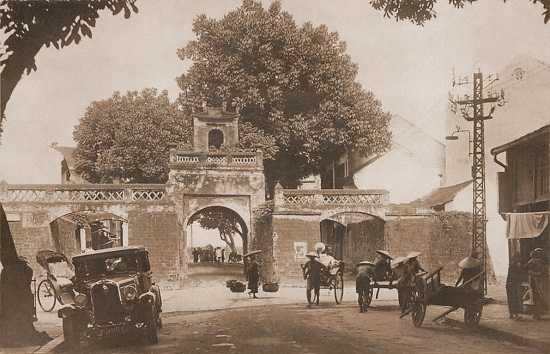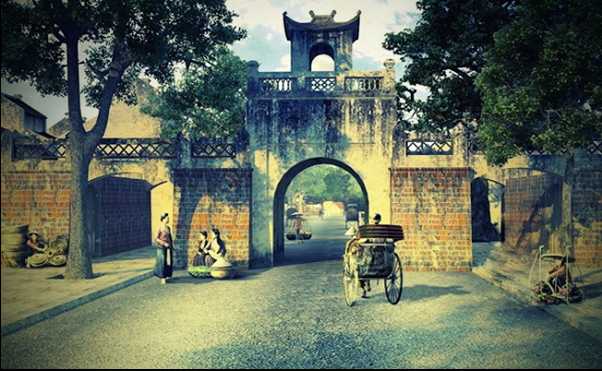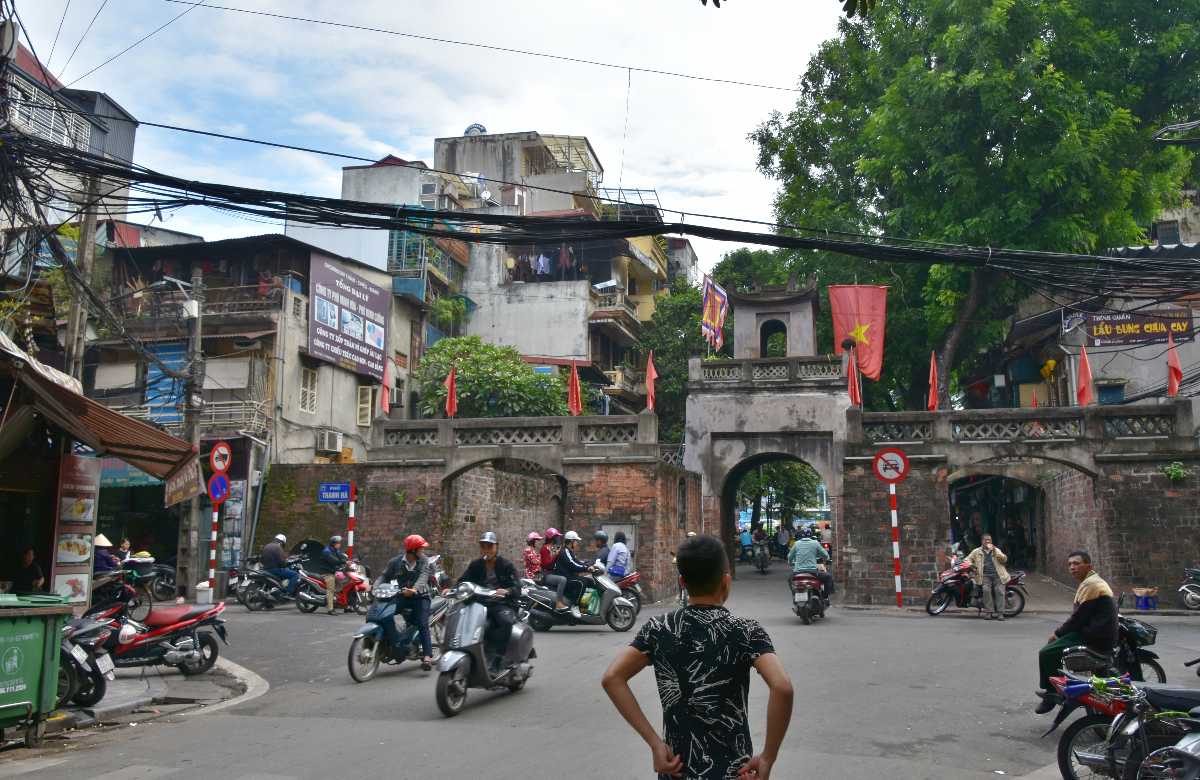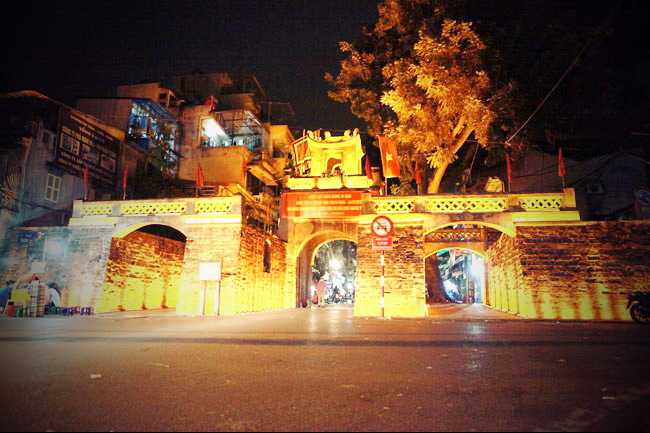Ways to Experience this attraction
Old City Gate, Hanoi Overview
The only surviving city gate of ancient Hanoi, O Quan Chuong, also known as the Old City Gate or Old East Gate, was named after a chief of the army to remember him and other Nguyen soldiers who fought against the French. It has a typical architecture of a watch-tower from the Nguyen dynasty and till today, acts as a proof of the struggle.
Quan Chuong, better known as the old east gate of the city of Hanoi, is the very last of the 16 city gates standing today. It was once the entry point to the ancient walled city that had been secured at the eastern end by this gate. Hanoi has expanded over the years and is no longer a medieval town that had to be protected on all sides during foreign invasions.

The remaining entrance to the last bastion of Thang Long is situated within the Old Quarter of Hanoi along with the other historical places of interest. The gate remains an exemplary evidence of traditional architecture prevalent during the rule of the Nguyen Dynasty. Sentries remain posted on the roof of the tower to date.
Old City Gate History

The Old City Gate had been constructed in 1743 and named Quan Chuong for a brave soldier who laid down his life trying to protect Hanoi from the French troops. The east gate played a strategic role in keeping the French army out again in 1846, after more than a century had passed by. It also had a significant role in keeping the Americans out during the Vietnam War that had been fought against all odds. It had been demolished multiple times as well only to be restored to its former glory every time. Strangely, each ruler or victorious side decided to rebuild the gate in exactly same manner thus remaining true to its original architecture. The last restoration work took place in 2010, almost 16 years after it had been recognized by the government as a historical site.
Old City Gate Architecture

The present day structure of the Old City Gate can be found opposite the Red River. The ten feet high, double storey arched gate makes an imposing picture that is visible from afar. The visitors are seen looking up in wonder at the cupola of the grey colored tower built on the upper level of the gate. The Vietnamese National Flag can be seen fluttering as one comes near the tower. Most tourists are amazed to find an inscription on a small column placed near the entrance, ordering the military to safeguard the local populace.
How to Reach the Old City Gate

The Old City Gate of Hanoi is situated at the crossroad of the Hang Chieu road and Dao Duy Tu Street. The backpack group preferring to reside in the Old Quarter can walk to the gate easily. The ones intent on visiting the Old Gate directly from the Airport can hop onto Bus No. 17 that terminates at the bus stop adjacent to the gate. Metered taxis are available for tourists who do not want walk to the Old Quarter while solitary visitors would do well to hire a Xe Om (motorcycle taxi) at a modest price of VND 15,000 to VND 20,000 for a 20 minute ride.
Tips for Visiting the Old City Gate
The locals avoid the main entrance by walking on either side of it for reaching the center of the Old Quarter. They also take much pride in preserving the heritage that reminds them of the courage and 'never say die' attitude of the Vietnamese people.
Quan Chuong or the old city gate in Hanoi is the gateway to the Old Quarter of the city. It has been recognized as a historical site, having guarded the city from the ancient era that saw the advent and fall of the Nguyen Dynasty to the present times.
Read More on Old�City Gate
Old City Gate History

The Old City Gate had been constructed in 1743 and named Quan Chuong for a brave soldier who laid down his life trying to protect Hanoi from the French troops. The east gate played a strategic role in keeping the French army out again in 1846, after more than a century had passed by. It also had a significant role in keeping the Americans out during the Vietnam War that had been fought against all odds. It had been demolished multiple times as well only to be restored to its former glory every time. Strangely, each ruler or victorious side decided to rebuild the gate in exactly same manner thus remaining true to its original architecture. The last restoration work took place in 2010, almost 16 years after it had been recognized by the government as a historical site.
Old City Gate Architecture

The present day structure of the Old City Gate can be found opposite the Red River. The ten feet high, double storey arched gate makes an imposing picture that is visible from afar. The visitors are seen looking up in wonder at the cupola of the grey colored tower built on the upper level of the gate. The Vietnamese National Flag can be seen fluttering as one comes near the tower. Most tourists are amazed to find an inscription on a small column placed near the entrance, ordering the military to safeguard the local populace.
How to Reach the Old City Gate

The Old City Gate of Hanoi is situated at the crossroad of the Hang Chieu road and Dao Duy Tu Street. The backpack group preferring to reside in the Old Quarter can walk to the gate easily. The ones intent on visiting the Old Gate directly from the Airport can hop onto Bus No. 17 that terminates at the bus stop adjacent to the gate. Metered taxis are available for tourists who do not want walk to the Old Quarter while solitary visitors would do well to hire a Xe Om (motorcycle taxi) at a modest price of VND 15,000 to VND 20,000 for a 20 minute ride.
Tips for Visiting the Old City Gate

Quan Chuong or the old city gate in Hanoi is the gateway to the Old Quarter of the city. It has been recognized as a historical site, having guarded the city from the ancient era that saw the advent and fall of the Nguyen Dynasty to the present times.
Top Hotel Collections
Top Hotels Near Old�City Gate
Old�City Gate Reviews

Have a Question on Old City Gate?

experience.